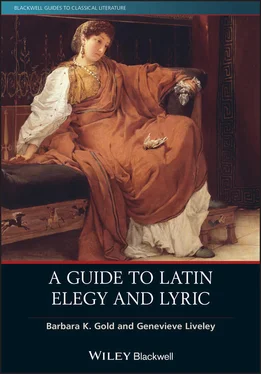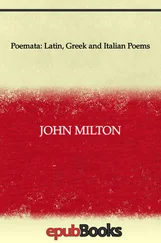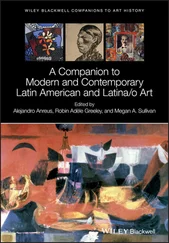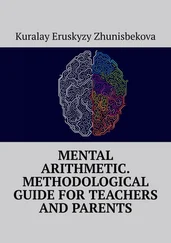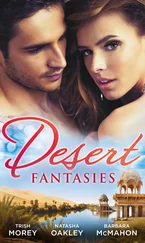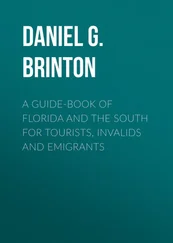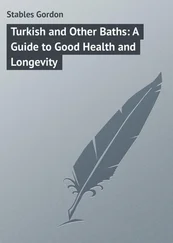Analyzing a Latin lyric or elegiac poem in this detailed way is known as “close reading,” and even if you don’t find something meaningful or interesting to say about every single line in a given poem, this technique will add depth and nuance to your understanding. You should also pay close attention in your “close reading” to any figurative language that you come across. This might include: metaphor, simile, personification, metonymy , and imagery – or any figurative expression used by the poet to transform ordinary language into a “heightened form of speech.” In Horace’s Odes 1.5, for example, the poet goes on to add more depth and detail to his characterization of Pyrrha as duplicitous and untrustworthy. He uses natural imagery likening her unpredictable temperament and mood-swings to the “seas roughened by black winds” ( aspera/nigris aequora ventis – 1.5.6-7). We might even interpret the name Horace gives to this character as a figurative expression of her “fiery” temper. Perhaps Pyrrha represents the fiery passion of love (or desire) personified? Figurative language can be difficult to translate, and metaphors (an implied comparison between two things) and metonymy (use of an associated term to stand in for some other object or concept) can be obscure. However, they all contribute to that essential characteristic of poetry as a “heightened form of speech,” and making sense of this figurative language is all part of what it means to read and understand a Latin lyric or elegiac poem.
Part II. How to Teach Latin Elegiac and Lyric Poetry
Guiding students as they translate the Latin (and its literary figures) is only the beginning. Each genre, each author, each topic, and each poem will invite further analysis and study, raising questions about a wide range of difficult subjects: politics, poetics, gender, sexuality, religion, history, philosophy, ethics, and more. Elegy in particular introduces a number of “uncomfortable” subjects to the classroom, including: abortion, death, rape, and suicide. There is, as yet, no single book offering advice on “how to teach Latin lyric and/or elegy.” However, there is plenty of support and guidance available to help teachers negotiate these challenges and the following suggestions draw upon the wealth of advice collected by experienced teachers in various classroom contexts over the past few decades (see the “Guide to Further Reading” below). Clearly there is no single best approach to teaching Latin lyric and elegiac poetry, but these suggestions are a good starting point:
Get yourself a good “Companion” for the journey – The Cambridge Companion to Ovid, edited by Philip Hardie (2002); A Companion to Latin Literature, edited by Stephen Harrison (2006); A Companion to Catullus, edited by Marilyn Skinner (2007); The Cambridge Companion to Horace, edited by Stephen Harrison (2007); Stephen Heyworth’s Cynthia: A Companion to the Text of Propertius (2007a); A Companion to Ovid, edited by Peter Knox (2009); A Companion to Horace, edited by Gregson Davis (2010); A Companion to Roman Love Elegy, edited by Barbara Gold (2012); and The Cambridge Companion to Latin Love Elegy, edited by Thea Thorsen (2013).
Choose a “Reader” – Paul Allen Miller’s Latin Erotic Elegy: An Anthology and Reader (2002) stands out among the current library of textbooks available because it combines a judicious selection of Latin texts (including some pieces by Catullus and Sulpicia) together with textual commentaries and a critical anthology of the key pieces of secondary scholarship. Textbook style “Readers” of individual authors are also great teaching and learning resources. Try: Ronnie Ancona’s Passion: A Catullus Reader (2004); Paul Allen Miller’s, A Tibullus Reader (2013a); Phebe Bowditch’s, A Propertius Reader (2014); and Carole Newlands’, An Ovid Reader (2014).
Find a textbook or set of online resources that works for your needs and those of your students. There are hundreds of textbooks on the market and hundreds more sites online offering free texts, translations, commentaries, and study notes – both for students and teachers. These can vary widely in quality and disappear from servers so we do not offer any specific recommendations of online resources. However, the journal Classical World regularly publishes textbook reviews and surveys so is a good place to begin. Online teachers’ forums such as The Classics Library ( https://www.theclassicslibrary.com) host an excellent array of teaching resources too.
Survey the wide range of critical reflections and essays written and published by experienced teachers of lyric and elegy, learn from their mistakes, and borrow their best ideas. The journal Classical World includes a useful section on pedagogy.
William Fitzgerald’s excellent How to Read a Latin Poem: If You Can’t Read Latin Yet (2013) is an essential piece of reading for both students and teachers of lyric and elegy. Similarly, anyone interested in teaching or learning about meter should consult at least one of Llewelyn Morgan’s studies: “Metre Matters: Some Higher-level Metrical Play in Latin Poetry.” Proceedings of the Cambridge Philological Society 46 (2000): 99–120; Musa Pedestris: Metre and Meaning in Roman Verse (2010); and “Elegiac Meter: Opposites Attract.” In B. Gold, ed., A Companion to Roman Love Elegy (2012), 204–218. L. P. Wilkinson’s Golden Latin Artistry (1963) is also still relevant here.
In addition to their literary subject content, a number of the “Companions” and “Readers” suggested above also include relevant chapters on pedagogy. See in particular, the four pieces in Barbara K. Gold’s A Companion to Roman Love Elegy (2012): Ronnie Ancona’s “Teaching Roman Love Elegy.”; Barbara Weiden Boyd’s “Teaching Ovid’s Love Elegy.”; Sharon James’ “Teaching Rape in Roman Elegy, Part II.”; and Genevieve Liveley’s “Teaching Rape in Roman Elegy, Part I.” The journal Classical World regularly includes articles on pedagogy and the following offer some useful insights into teaching elegy and lyric: P. Katz’s “Teaching the Elegiac Lover in Ovid’s Amores .” Classical World 102 (2009): 163–167; Laura McClure’s “Feminist Pedagogy and the Classics.” Classical World 94 (2000): 53–55.
The following works of pedagogy also offer useful starting points for anyone teaching Latin lyric or elegiac poetry: Ronnie Ancona’s A Concise Guide to Teaching Latin Literature (2007); Barbara Weiden Boyd and Cora Fox’s Approaches to Teaching the Works of Ovid and the Ovidian Tradition (2010); Richard LaFleur’s Latin for the 21st Century: From Concept to Classroom (1998); and, especially useful for teaching Latin in the US, the regularly updated Standards for Latin Teacher Preparation (current edition by Little, Pearcy, et al. (2010): https://www.aclclassics.org/Portals/0/Site%20Documents/Publications/LatTeachPrep2010Stand.pdf).
1 The Literary, Political and Social Contexts of Latin Elegy and Lyric
Latin elegy and lyric respond immediately to their contemporary socio-political worlds, making it vital that we understand the events and cultural tides of this turbulent period of history before we can properly understand the poetry that is produced in and speaks to this revolutionary context. At the same time, Roman lyric and elegy are also heavily influenced by the older literary traditions of the Greeks and, in order to see what is innovative and exciting about the Roman poets writing in these genres, we first need to know something of this literary background. Only when we have a sense of these background contexts can we fully value the originality of this Latin poetry, appreciate why certain themes and motifs recur in these genres, and recognize not only the ingenuity and sophistication but also the playfulness and humor of this work (see Chapter 9). By holding in mind the important fact that the Roman lyric and elegiac poets all write to some degree under the shadow of the Greek and Roman poets who had preceded them, we are also able to enjoy more fully the rich intertextual allusions that are so characteristic of these two genres.
Читать дальше
